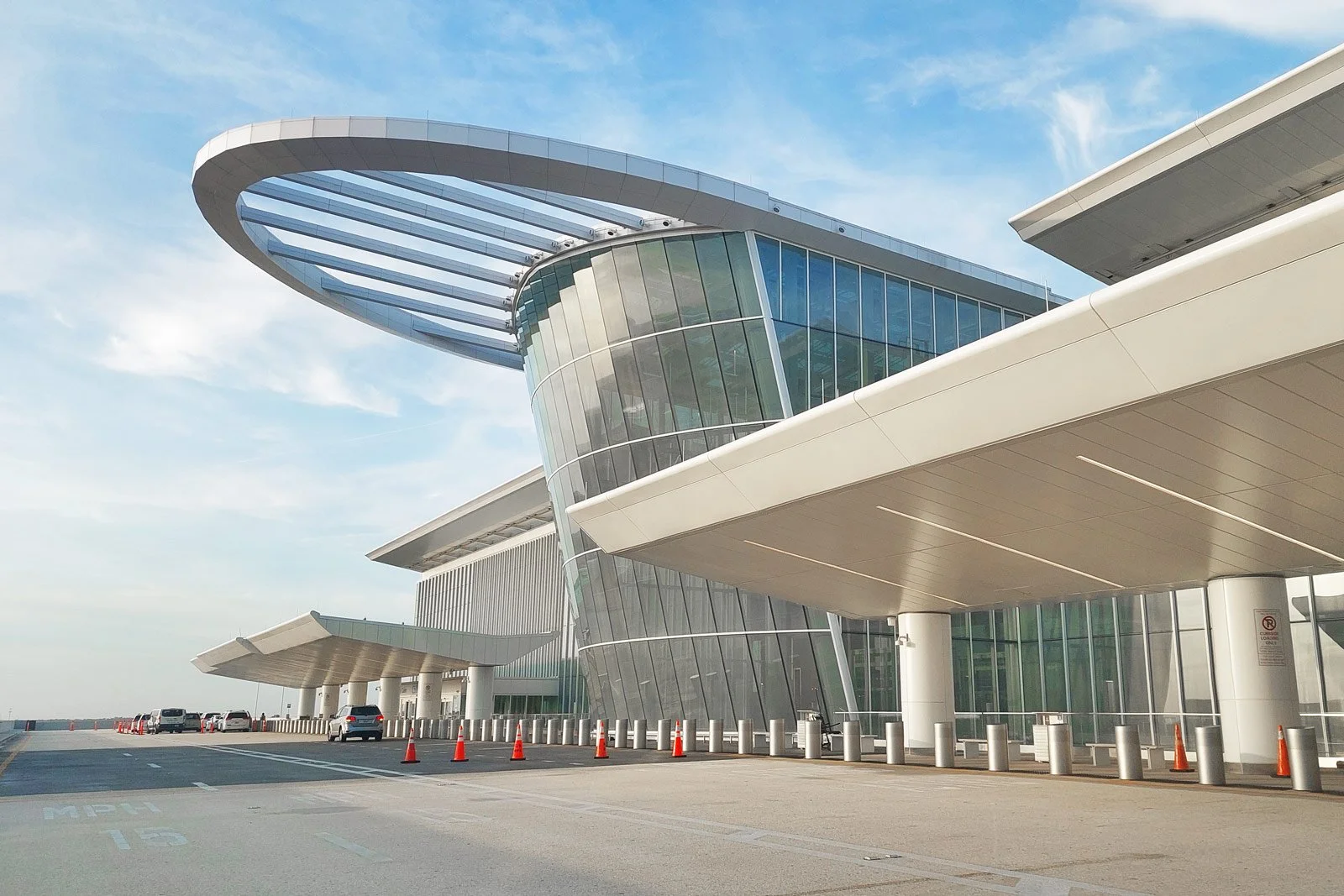Why is Orlando Airport’s code MCO?
Atrium at Orlando International Airport, with a Hyatt Regency Hotel. Orlando Airport’s IATA code, MCO, originates from its days as McCoy Air Force Base.
Image: The Window Flyer
If you’re booking a flight to Orlando, Florida—home to Walt Disney World, Universal Studios, and countless other attractions—you might notice something confusing. Instead of an airport code resembling Orlando, such as “ORL,” your airline displays MCO.
So why is Orlando Airport’s IATA code MCO, and what does it stand for? The answer lies in decades of aviation and military history.
How Airport Codes are determined
Many travelers assume that an airport’s three-letter IATA code matches its city name. While this is often true—SFO for San Francisco, SEA for Seattle, LAX for Los Angeles, OMA for Omaha —airport code assignments are not always that simple.
The International Air Transport Association (IATA) assigns codes based on a variety of factors, including:
Preexisting military or radio beacon identifiers
Historical names of airports
Conflicts with reserved letters or codes
Legacy naming from older facilities
For example, in the U.S., the letter N is reserved for the U.S. Navy, which prevents cities like Newark or Nashville from having airport codes that begin with N. This is why Newark is EWR and Nashville is BNA.
Origins of MCO for Orlando International Airport
Orlando International Airport traces its roots back to the early 1940s, to an airfield that was originally constructed for the US Army Air Forces, which is the direct predecessor to the United States Air Force.
Before it became a major commercial airport, the site of today’s Orlando International Airport served as a military airfield. Over time, it held several names:
Orlando Army Airfield No. 2
Pinecastle Army Airfield
Pinecastle Air Force Base
In 1958, the base was renamed McCoy Air Force Base to honor Colonel Michael Norman Wright McCoy, a base commander who died in the line of duty. McCoy is where the airport’s code MCO is derived from. Even after military operations wound down, and commercial operations continued to ramp up 20 years later, the code was not changed.
Why isn’t Orlando International Airport’s code ORL?
Orlando International Airport (MCO) opened its newest terminal, Terminal C, in 2022.
Image: The Window Flyer
Commercial air service to Orlando had not always been at the present-day Orlando International Airport. In 1928, central Florida’s first commercial airport, named Orlando Municipal Airport, opened. This airport, located near Downtown Orlando, was assigned the airport code ORL.
As the jet age arrived and demanded longer runways and more space, Orlando Municipal Airport could not expand due to surrounding neighborhoods and other physical limitations such as runway length. With growing needs on the horizon, the City of Orlando reached an agreement with the U.S. Air Force in in 1962 to use McCoy Air Force Base, creating a joint civil-military facility.
To accommodate commercial traffic, an existing missile maintenance hangar at McCoy AFB was converted into the airport’s civil air terminal, which became known as the Orlando Jetport at McCoy. Additionally, to prevent future confusion for travelers, the existing Orlando Municipal Airport would be renamed Herndon Airport. However, that airport would retain its original ORL code.
The early 1970s brought further growth and change to aviation in Orlando. The opening of the Magic Kingdom at Walt Disney World brought on a major influx of tourists arriving by air. In 1975, the US Air Force closed McCoy Air Force Base. Operations of the closed base were turned over to a newly-established entity, the Greater Orlando Aviation Authority (GOAA), which would go on to operate both McCoy AFB and Herndon Airport.
McCoy AFB would be renamed Orlando International Airport and Herndon Airport, would eventually be renamed several years later as the Orlando Executive Airport.
Despite both airports’ name changes, their IATA codes were maintained as MCO and ORL, respectively, which is why Orlando International Airport is known across the globe as MCO.
Planning a trip to Orlando (MCO)
Orlando International Airport (MCO) opened Terminal C, in 2022, featuring daylight interiors.
Image: The Window Flyer
If you are planning a trip to Orlando, you’ll most likely be flying through Orlando International Airport (MCO), which served 57 million annual passengers in 2024 and hosts several dozen airlines.
Orlando Executive Airport (ORL) is reserved for general aviation traffic, and Orlando Sanford International Airport (SFB) is served predominantly by ultra-low cost carrier (ULCC), Allegiant Air.
If you’re looking to decide which airline to fly, consider that Orlando, Florida is a major leisure destination. As such, some of the largest carriers at MCO include low-cost carrier Southwest Airlines, along with ultra-low cost carriers Frontier Airlines and Spirit Airlines, which make up approximately half of MCO’s passenger traffic.
If you’re not into flying low-cost carriers, legacy carriers are also well-represented.
Summary
Orlando International Airport (MCO) opened Terminal C, in 2022, featuring digital media art.
Image: The Window Flyer
In summary, Orlando International Airport uses the code MCO because it was originally McCoy Air Force Base, and the code was carried over when the site became a commercial airport. The older code ORL remained with the city’s original airport—now Orlando Executive Airport—while SFB identifies Orlando Sanford International Airport. This history explains why Orlando’s main airport has a code that doesn’t directly match the city’s name.
Whether you’re heading to Orlando for theme parks, conventions, or sunshine, knowing the difference between MCO, ORL, and SFB ensures you’re booking the right airport.
Related Content











